Work has moved out of the office and into the home. With remote work here to stay until at least mid-2021, companies must carefully an employee wellness program that builds resilience and long-term mental health in a remote workforce.
We asked 1,109 remote workers for their take on burnout, productivity and the trade-offs between office life and remote work. Here are the results of our Pandemic Work Perks survey.
Office life vs remote work
To get an idea of how the new remote life compares to the beforetimes, we started by asking what workers missed the most – and least – about the office after 10 months of working from home. There are some things we miss about office life: collaboration with colleagues, free coffee, team happy hours, maybe even catered lunches. And some things, not so much: the commute and wasting too much time in meetings!
Here’s what the survey found:
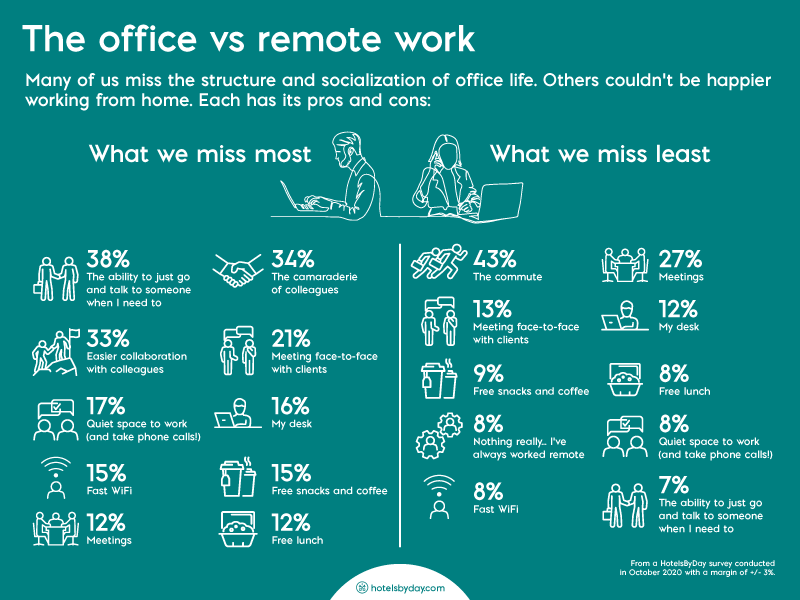
Productivity at home remains high…
It’s kind of hard to believe but the majority of respondents felt that their productivity remained high. Ten months into remote work, 39% said they were more productive than ever, with 34% “getting the hang” of WFH life but not necessarily thriving.
That leaves one in four respondents is taking it day by day when it comes to productivity. That’s still a significant portion of any workforce! It means that a quarter of your team is struggling to maintain focus and get through the day…A little compassion and empathy can go a long way towards keeping everyone aligned!
…but burnout is a real threat
Remote workers are spending too much time working — and not enough time recovering. In fact, only 10% report not being burned out at all, leaving the lion’s share of workers experiencing some level of overwork.
Some clear warning signs: 1 in 4 workers are already burned out and 4 out of 10 are “nearly there” when it comes to burnout. That leaves 3 of 10 workers that aren’t yet burnt out — but aren’t exactly thriving.
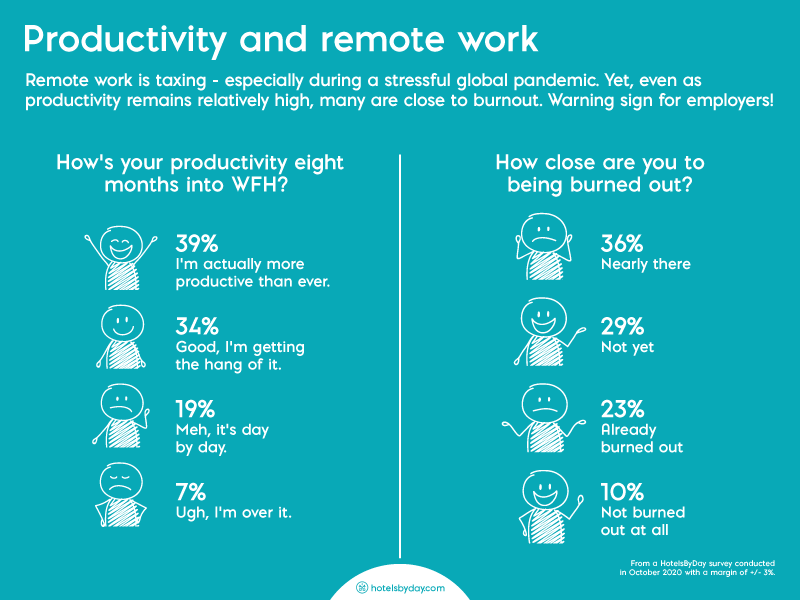
The relationship between burnout and productivity is real. Psychologists have found that job stressors and burnout do indeed affect each other. But, in a twist, burnout actually increases job stressors and creates a vicious cycle of burnout-induced stress that compounds until employees reach a critical level of burnout.
So really, preventing burnout is key to minimizing job stress and triggering runaway burnout that can dramatically impact an employee’s mental state (and resulting productivity). One way to manage burnout is to align office perks with the realities of the remote workplace – the next section of our survey!
Pandemic work perks? Flex hours, extra days off and hotel day passes
Burnout is never pretty. It’s an insidious beast that threatens team cohesion and overall productivity. Managers looking to banish burnout have a few options: transparent communications so employees feel comfortable sharing struggles, a flexible approach to when and where work gets done and tailoring employee perks to the remote workplace.
When we asked employees to compare their favorite office perks to the ones that they prefer at the remote workplace, here are the top takeaways:
- Flexibility. Above all else, workers prized flexibility in when and how they got work done. The flexibility to set their own work hours was at the top of the list.
- Extra days off. With so many workers juggling family responsibilities alongside work, the second most popular remote work perk or extra personal days for self-care and family duties.
- Reimbursement for Internet. Working from home requires a reliable Internet connection, something that can be quite difficult to secure a plan multiple people are working and learning from home.
- Home office stipend. Helping workers transform them into office was the fourth most popular remote work perk. By offering a stipend to improve the home office, employers can help employees boost productivity and creativity.
- Alternative workplaces. Rounding out the top five was reimbursements to work elsewhere, like a hotel or co-working space. Sometimes you just need to get out of the house to be productive! Giving employees the option to work elsewhere is a productivity-enhancing, burnout-reducing pressure valve.
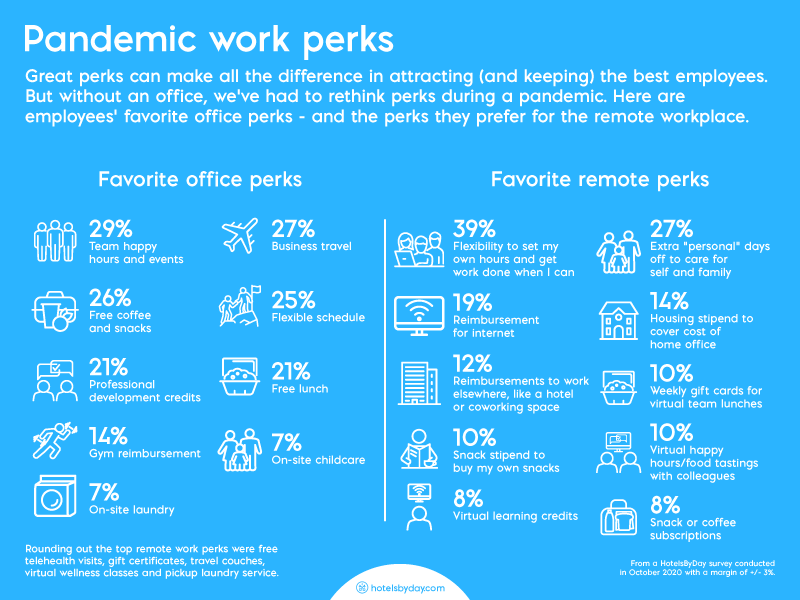
For the travel professionals out there, one interesting tidbit: business travel was a favorite office perk for 27% of workers. A fun and exciting perk that many of us miss greatly!
What this means for companies
We’re obviously biased but providing alternative workspaces gives employees a break from work-from-home-tedium. Even just one or two days a month out of the house can work wonders for boosting morale and productivity — and keeping burnout at bay.
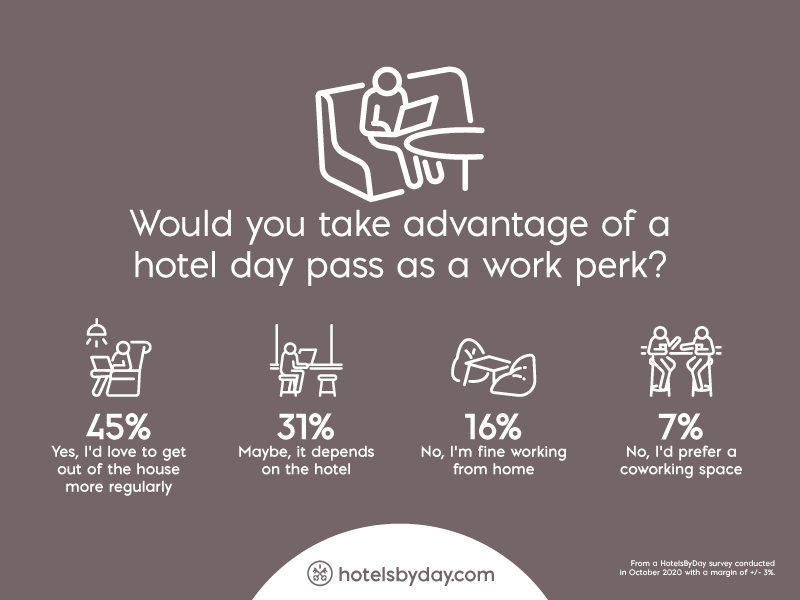
While catered lunches and other perks are nice touches, the Holy Grail is that “flow state” that comes from focused work. Give employees the headspace they need to both restore their mental health and create their best work!
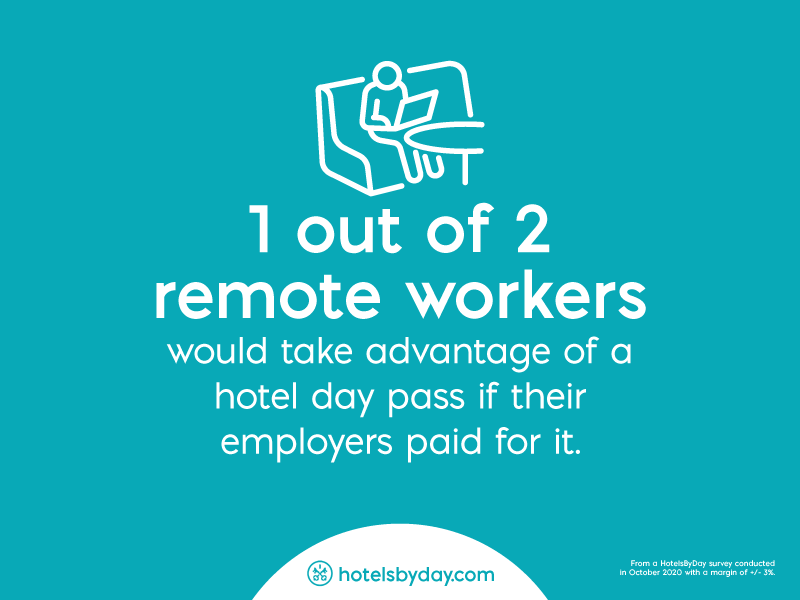
Work perks have changed during the pandemic. With fewer opportunities to differentiate your workplace with shiny perks like nap pods and unlimited kombucha, you have to get creative. Workers want perks that make their home lives easier — and help them perform at their best, even if the lines have blurred between work and home!
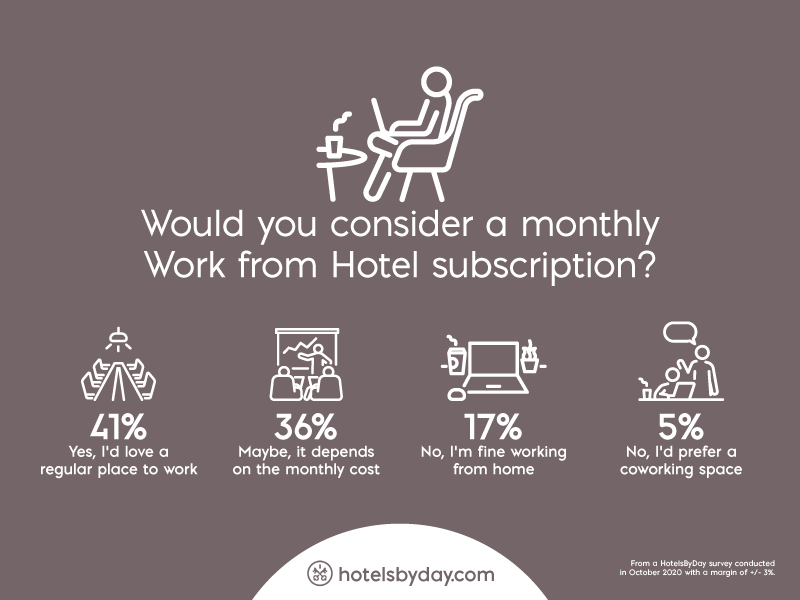
The full Remote Work Perks infographic

